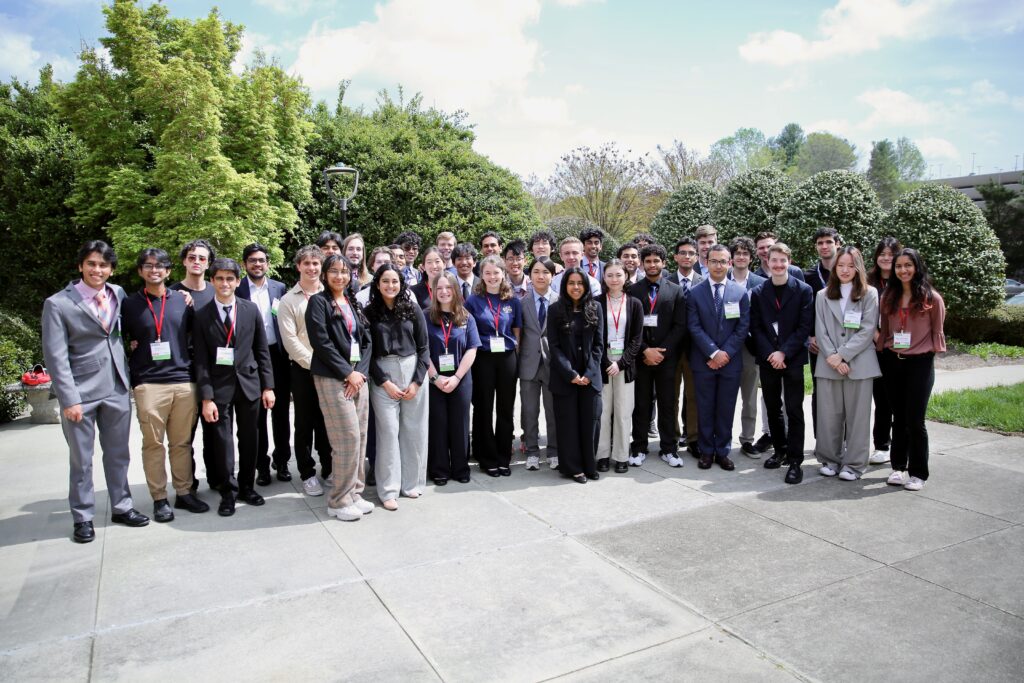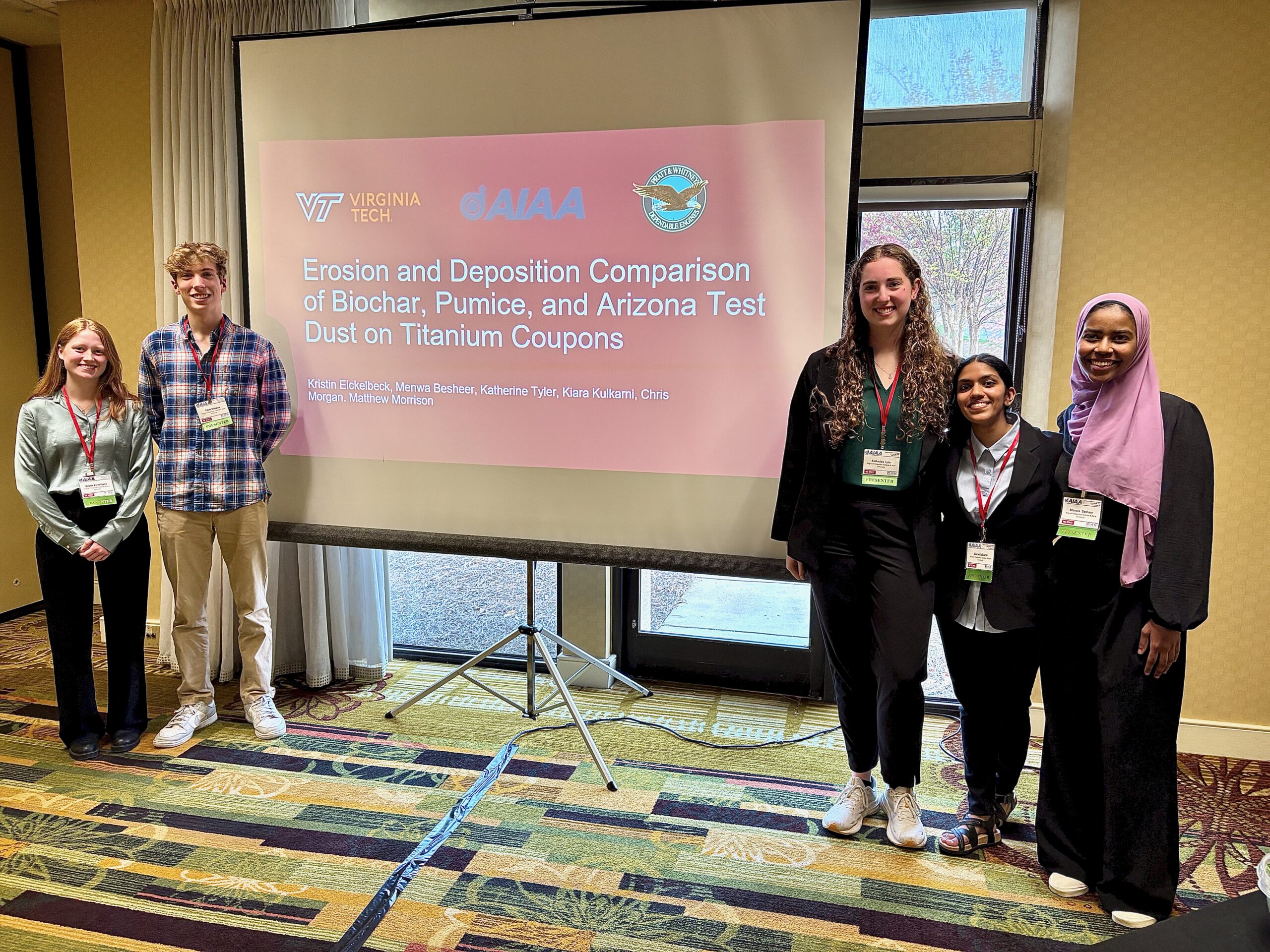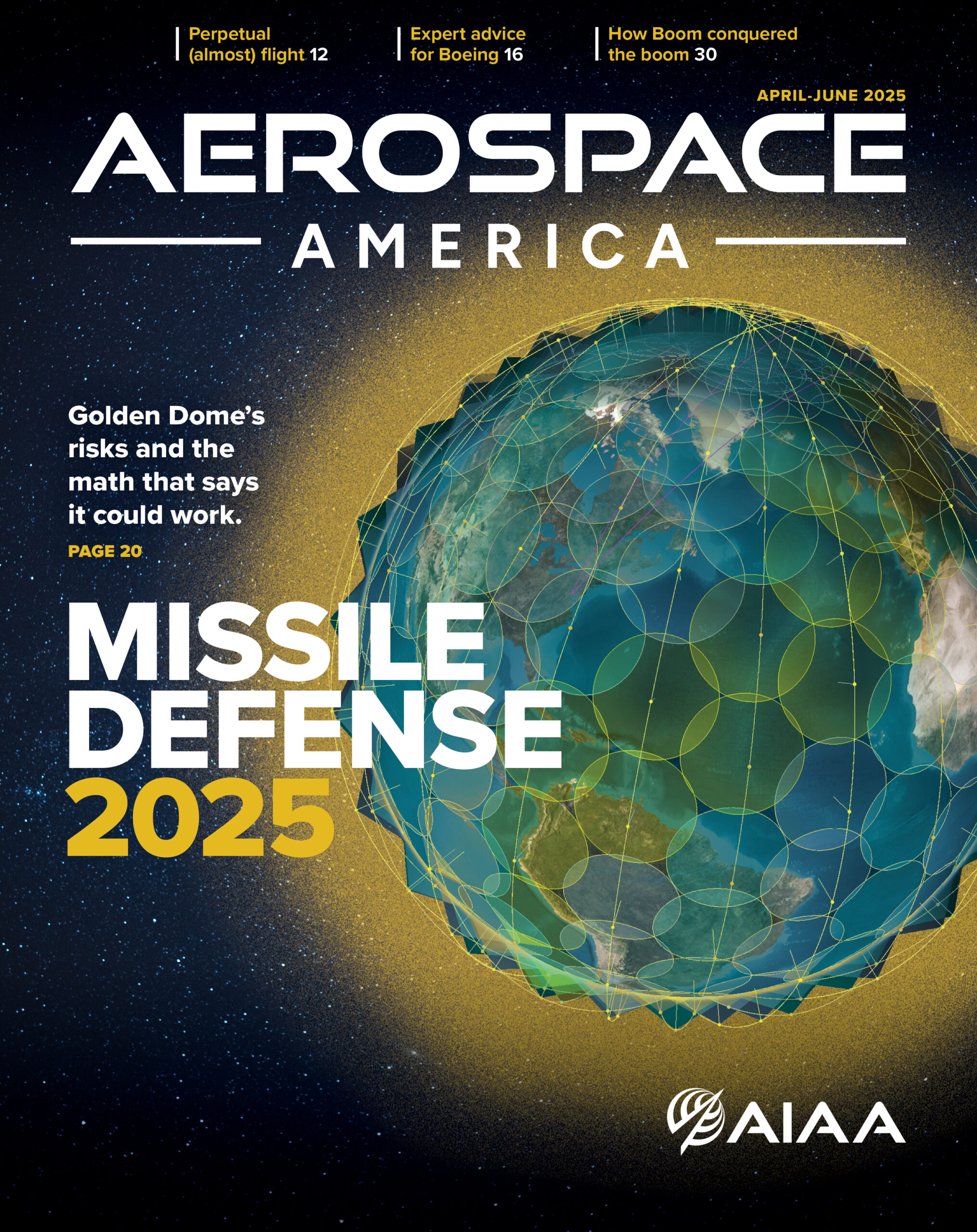On 3–4 April, the AIAA North Carolina State University Student Branch hosted the Region II Student Conference in Greensboro, NC. Attendance included 337 students from 21 colleges/universities who gave 116 presentations, as well as faculty, corporate representatives, and guest speakers.
The technical presentations were spread over two days, and students noted that it was an amazing experience to learn from so many innovative and inspiring research projects. Yash Chaudhari, an undergraduate student from Embry-Riddle Aeronautical University, remarked, “I received valuable feedback from both students and judges, which I’m excited to incorporate as I continue developing my work. This was truly an unforgettable experience. I’m very grateful to AIAA for hosting such a meaningful event and for giving me the chance to grow and connect within the aerospace community.”
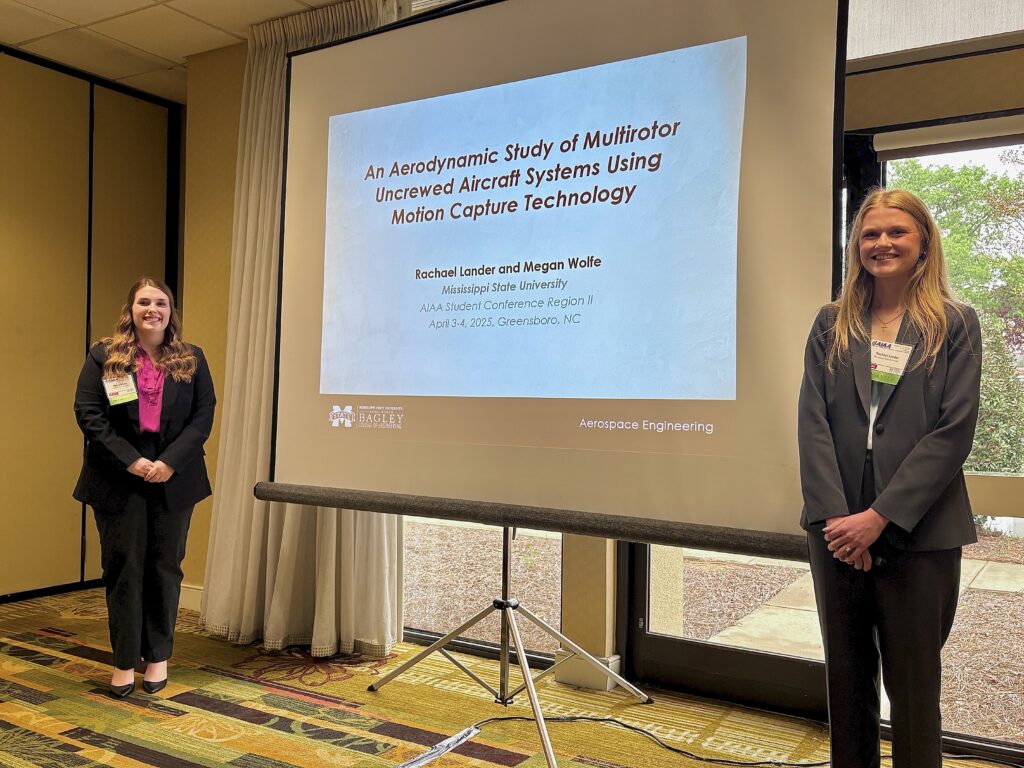

Adam Amar, Orion Aerothermodynamics System Manager at NASA Johnson Space Center, kicked off the conference with a presentation on “Artemis, Orion, and Coming Home from the Moon.” The lunch keynote, given by David Robinson, CEO of Corvid Technologies and Corvid Cyberdefense, provided an overview of the companies’ design/development, optimization, prototyping, testing, and manufacturing across a wide range of DoD systems. In addition, to educate students about possible employment and academic opportunities, there were information booths set up by the conference sponsors so students could meet with sponsor representatives.

On 4 April, some attendees had the opportunity to tour Honda Aircraft Company’s production facility, home of the HondaJet family of advanced light jet aircraft. Other students attended presentations made by professional members on the topic of “How to Stand Out” – an invaluable career skill.
The event wrapped up with the Awards Social Hour and Dinner, where AIAA CEO Clay Mowry spoke to the students about AIAA and the benefits of continuing with the Institute along their chosen career path. Patrick Porter, Vice President of Flight Test and Flight Operations at Honda Aircraft Company, gave the final keynote and discussed his career path starting as a student to his position at Honda – how one path led to the next and the risks he took along the way. Cash prizes were awarded for first-, second-, and third- place winners for each category and students had the option to publish their papers with AIAA.

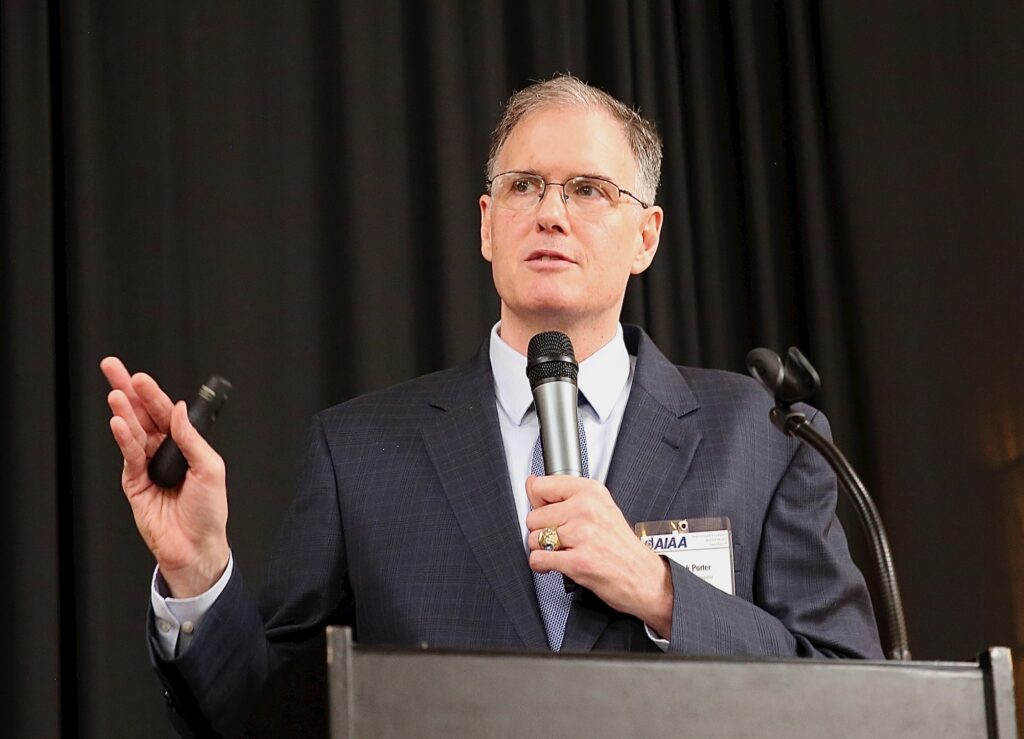
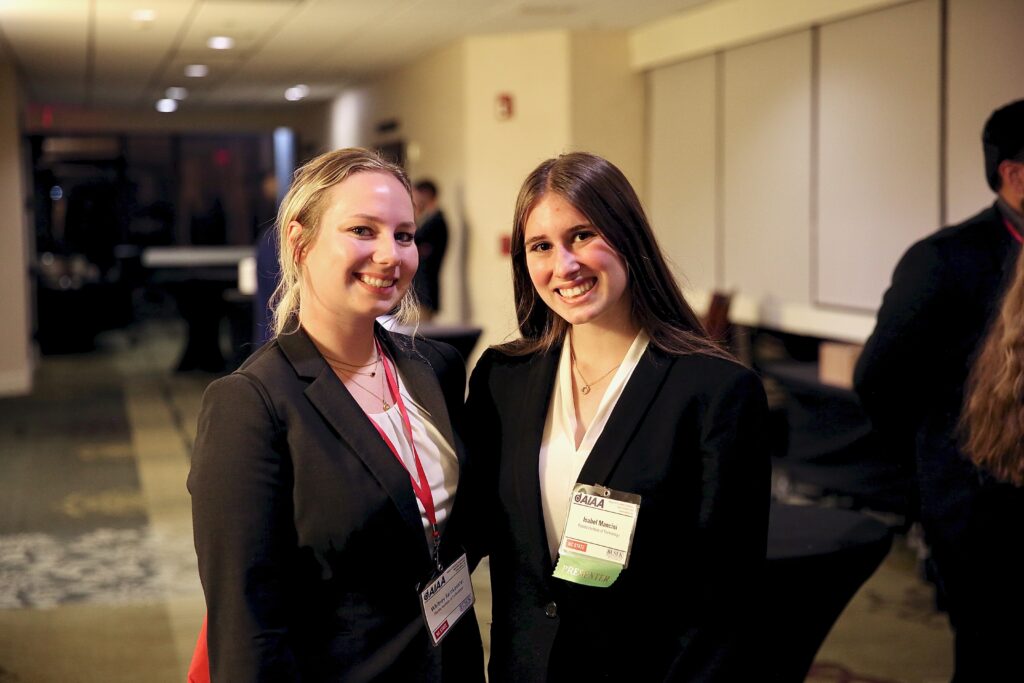
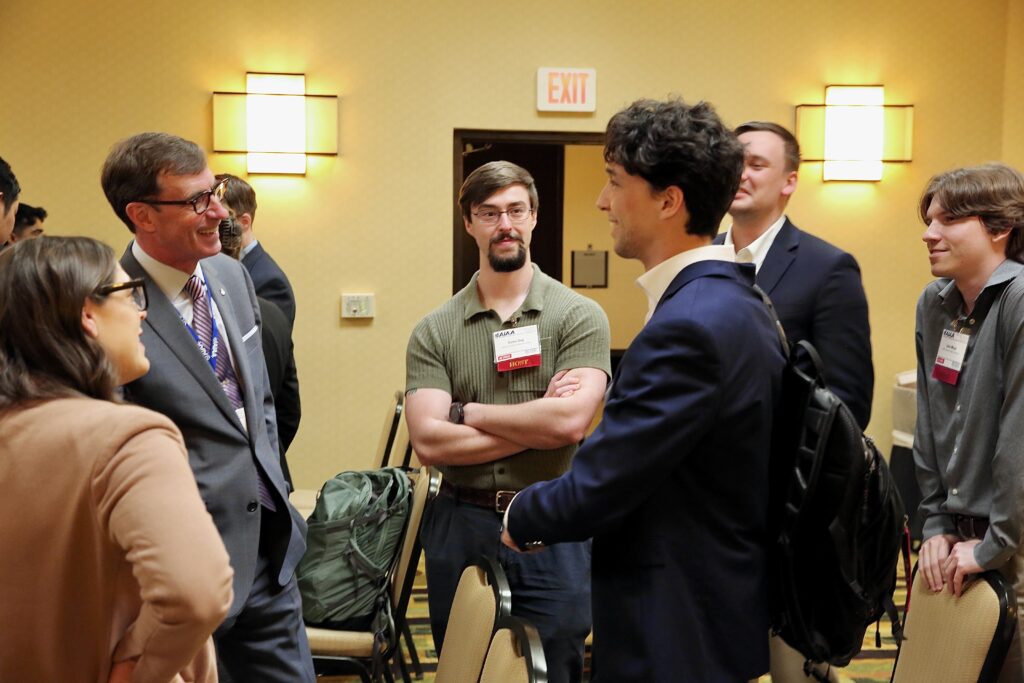
Region II Winners
Undergraduate Category
First Place: “Experimental Characterization of a Quadrotor’s Response Air Vortex Cannon,” Kyle VanHorn, University of North Carolina Charlotte (Charlotte, NC)
Second Place: “Development of a Student-Built LOX/Jet-A Coaxial Swirl Injector,” Dario Zaccagnino, Georgia Institute of Technology (Atlanta, GA)
Third Place: “Design and Fabrication of an EDS-Enabled Brush Prototype for Lunar Dust Mitigation,” Nishant Sood and Julie Linsey, Georgia Institute of Technology (Atlanta, GA)
Graduate Category
First Place: “Evolution of the Biderectional Vortex in a Capped Ellipsoidal Cyclonic Rocket Engine,” Patrick Eid and Joseph Majdalani, Auburn University (Auburn, AL)
Second Place: “On the Multipole Vortex (MpV) Motion in a Circular-Port Hybrid Rocket Engine,” Mitchell Sisk and Joseph Majdalani, Auburn University (Auburn, AL)
Third Place: “Star Elimination as a Means of Resident Space Object Identification for Space Situational Awareness,” Evan Pavetto-Stewart and Thomas Alan Lovell, Embry-Riddle Aeronautical University (Daytona Beach, FL)
Undergraduate Team Category
First Place: “STARGATE: An Undergraduate Experimental Gridded Ion Thruster Student Research Project,” Claude Blue, Peter Summers, Jeffrey King, and Themistoklis Chronis, University of Alabama Huntsville (Huntsville, AL)
Second Place: “Development of a High-Performance Avionics System for Real-Time Guidance and Control in High-Power Vehicles,” Cheng Liu, Mohammed Abdeen, and Kanav Chugh, Georgia Institute of Technology (Atlanta, GA)
Third Place: “Design and Analysis of Axial Turbine Power Extraction from a Small-Scale Rotating Detonation Rocket Combustor,” Corey Thunes, Donovan Ngum, Ellie Murray, Jose Barbeito, Lucas Nicol, Rodrigo Dacosta, Trevor Larsen and James Braun, North Carolina State University (Raleigh, NC)
Outstanding Student Branch Category
First Place: Auburn University (Auburn, AL)
Second Place: Georgia Institute of Technology (Atlanta, GA)
Third Place: University of Tennessee Knoxville (Knoxville, TN)
Open Topic Category
First Place: “Advancing Laser Communication for Mars Orbital Missions,” Om Acharya, Embry-Riddle Aeronautical University (Daytona Beach, FL)
Second Place: “The Orbiter: Pushing the Boundaries of Amateur Rocketry,” Yash Malik, Florida Institute of Technology (Melbourne, FL)
Third Place: “A Review of Hypersonic Vehicle Engine Optimization,” Nicholas Pisani and Peter Waszkowski, Florida Institute of Technology (Melbourne, FL)
